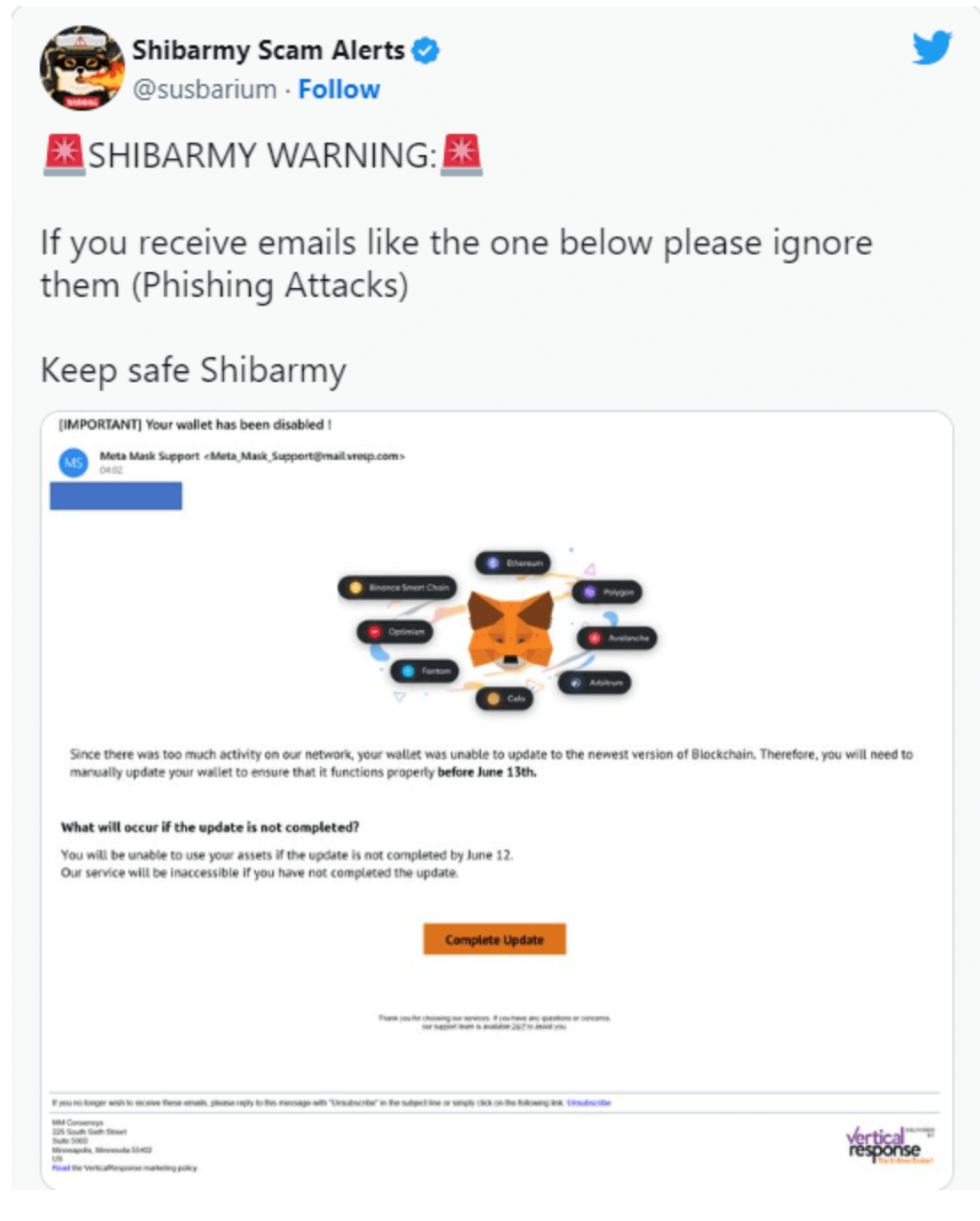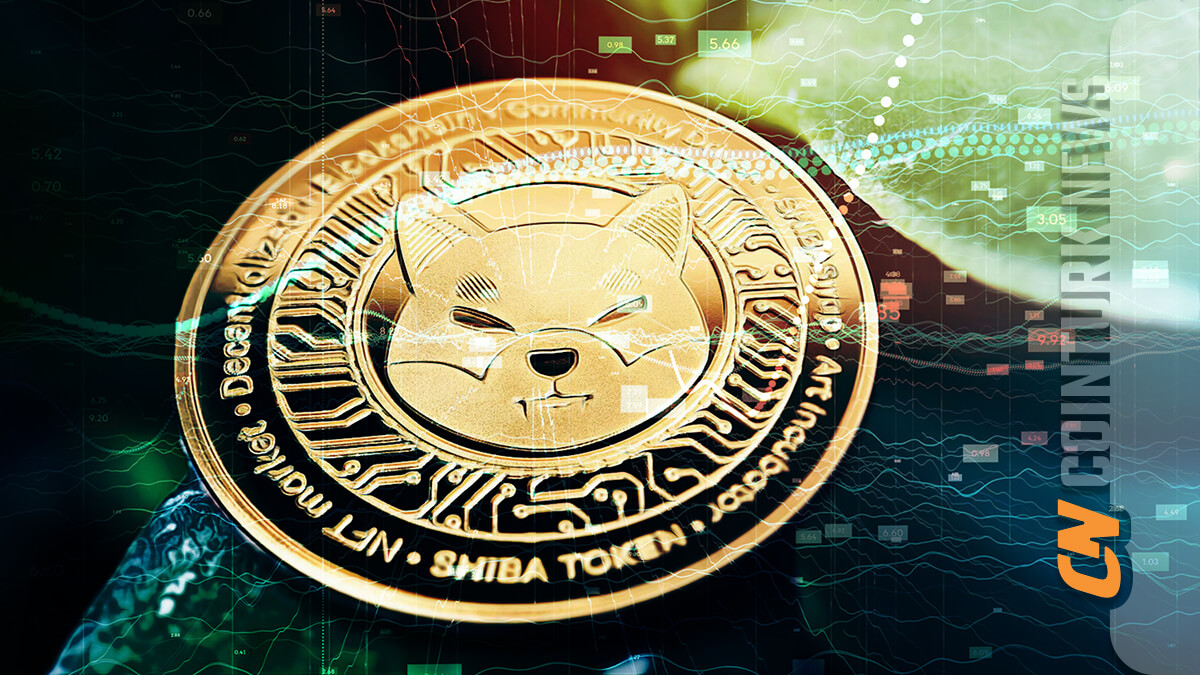The vibrant and passionate community surrounding the popular cryptocurrency, Shiba Inu (SHIB), has recently been warned against a new scam method posing a significant threat. With the rising popularity of SHIB and the increasing number of people joining the community, fraudsters have found a way to exploit the trust and enthusiasm of the members. But what exactly is this scam method, and how can Shiba Inu owners protect themselves from falling prey to it?
Attention Shiba Inu Investors!
To protect the lively and growing Shiba Inu community, ShibArmy Scam Alerts, a special Twitter account known for exposing scams, released a warning about a new scam method aimed to deceive SHIB owners and steal their funds. The scam revolves around phishing attacks, which are increasingly common in the crypto space.
The warning was triggered by a screenshot shared by ShibArmy Scam Alerts, displaying a fake email disguised as a message from Metamask. The email informs recipients that their wallets have been deactivated and instructs them to update their wallets by a specific deadline.

Scammers use fear tactics by threatening possible restrictions if the update is not completed on time. However, it’s crucial for SHIB owners to realize that this email is a carefully crafted scam and to stay alert against such fraudulent schemes.
Massive Crypto Scam
ShibArmy Scam Alerts emphasizes the importance of ignoring these scam emails, which aim to trick users and steal their hard-earned funds. Additionally, the community is urged to be cautious and avoid clicking on links from unknown or suspicious sources. By taking these proactive measures, SHIB owners can significantly decrease their risk of falling victim to such scams.
In a broader context, cybersecurity experts at Trend Micro discovered a significant operation related to a crypto scam organized by a group believed to be a Russian threat actor known as the Impulse Team. This operation involves falsely informing unsuspecting victims via SMS messages or email notifications that they’ve been selected as winners in a support draw organized by a cryptocurrency trading company or a similar entity. The researchers estimate that victims collectively lost approximately $5 million due to this sophisticated scam.

 Türkçe
Türkçe Español
Español









